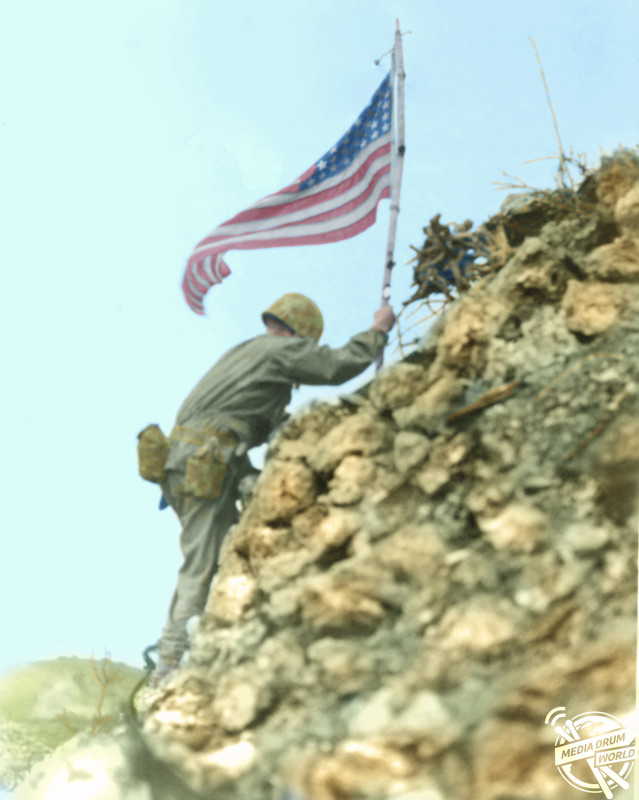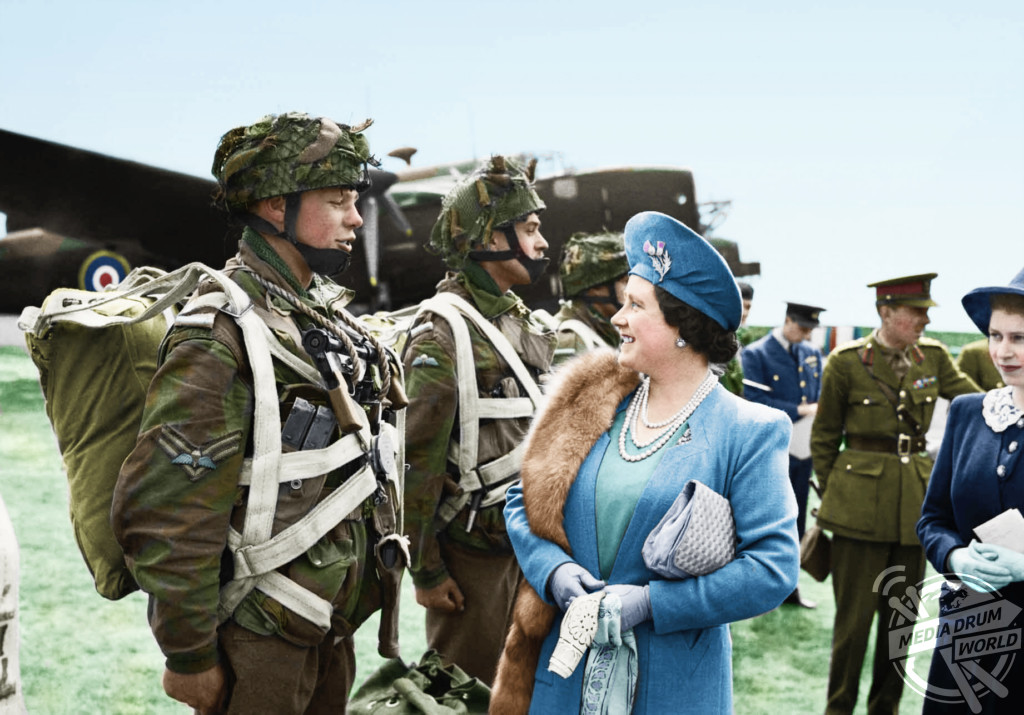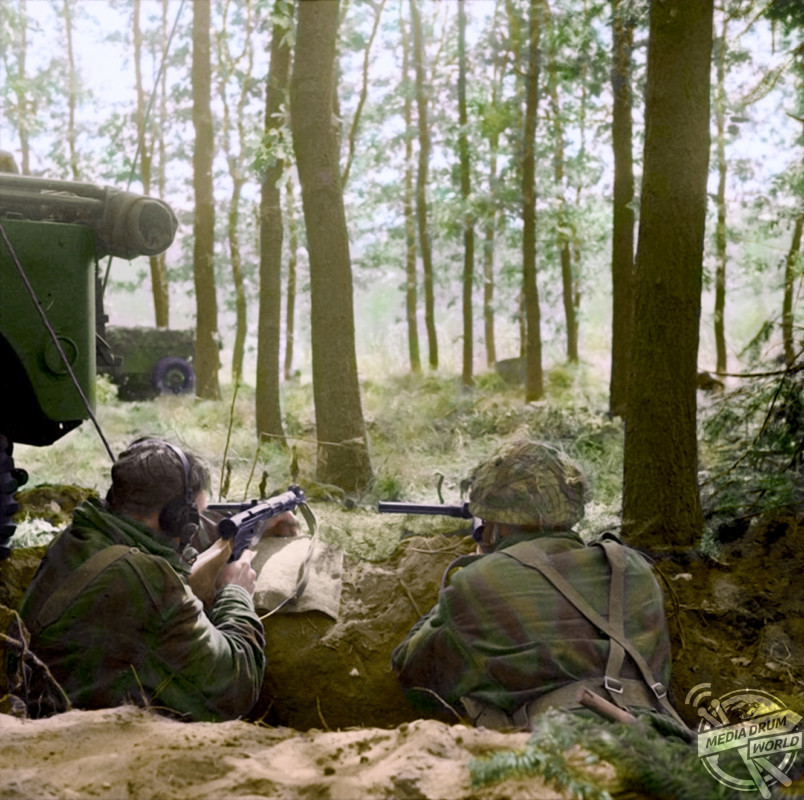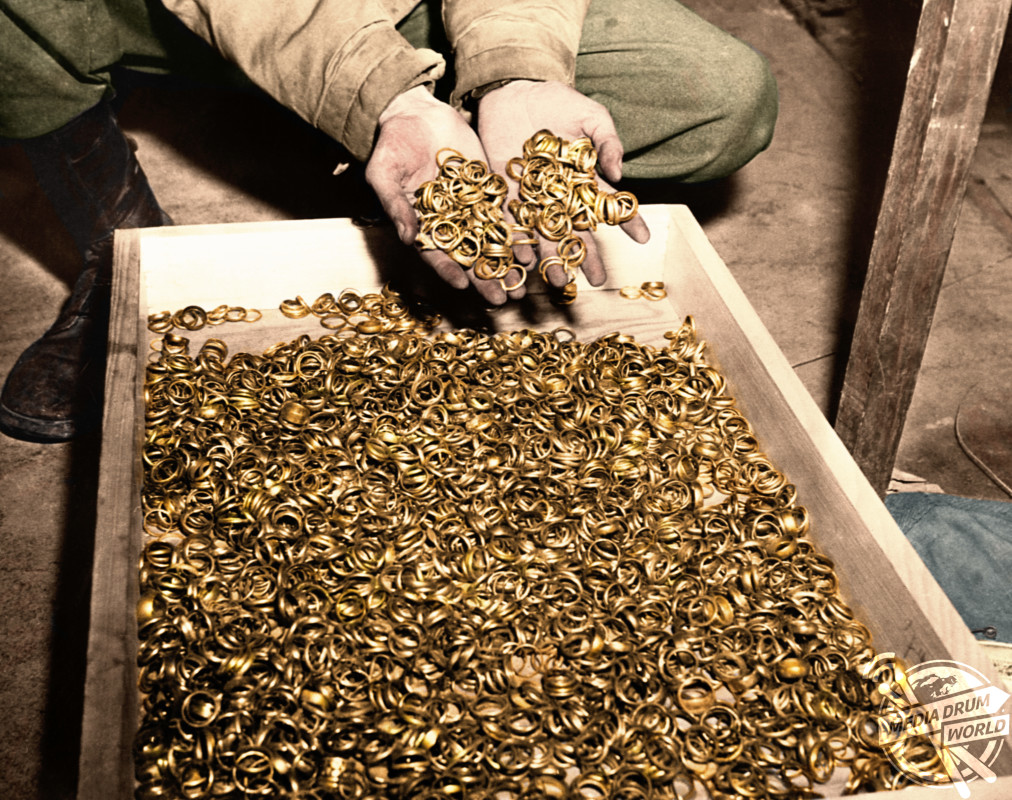
By Mark McConville
SOME of World War Two’s lighter-hearted moments as well darker images reflecting the harsh realities of war have been brought back to life after being expertly colourised.

Incredible images show a soldier of Cameron Highlanders chalking a warning to Hitler on the side of the train as troops leave Aldershot for France, Winston Churchill taking aim with a Sten gun during a visit to the Royal Artillery experimental station and a British soldier reading up on Sicily which was the next target for Allied invasion.

Other solemn shots show thousands of weddings rings the Nazis removed from Holocaust victims to salvage the gold, a bomb being dropped from a plane onto a friendly which had drifted out of position, killing all 11 inside; and the grave of a British airborne soldier killed during the battle of Arnhem in September 1944, photographed by liberating forces on 15 April 1945. On the cross is written in German: ‘unknown British soldier’.

The original photographs were painstakingly colourised by design engineer Paul Reynolds (48), from Birmingham.
“I mostly colourise war photos because each photo usually has a story to tell, stories of real everyday people,” he said.

“I think colourising detailed photos really brings them to life. You notice detail that usually gets missed due to the monotone background.
“The content of the photo conveys its own message; however I am glad that by colourising these photos more people are aware of the happenings of WWII.”
Paul explained how he added colour to the old photographs and the problems he ran into along the way.

“I use a digital pen and pad and basically layer on the colour as you would with a painting,” he said.
“I’ve painted from an early age so this transition to digital was quite easy for me. The only problems I come across are the condition of the photos especially private commissions, most are torn, folded, creased, water damaged, dust spots and discoloured which then has to be digitally repaired with a brush, this process usually takes longer than the paint, but the finished photo is 100% sharper and more pleasing on the eye.”






